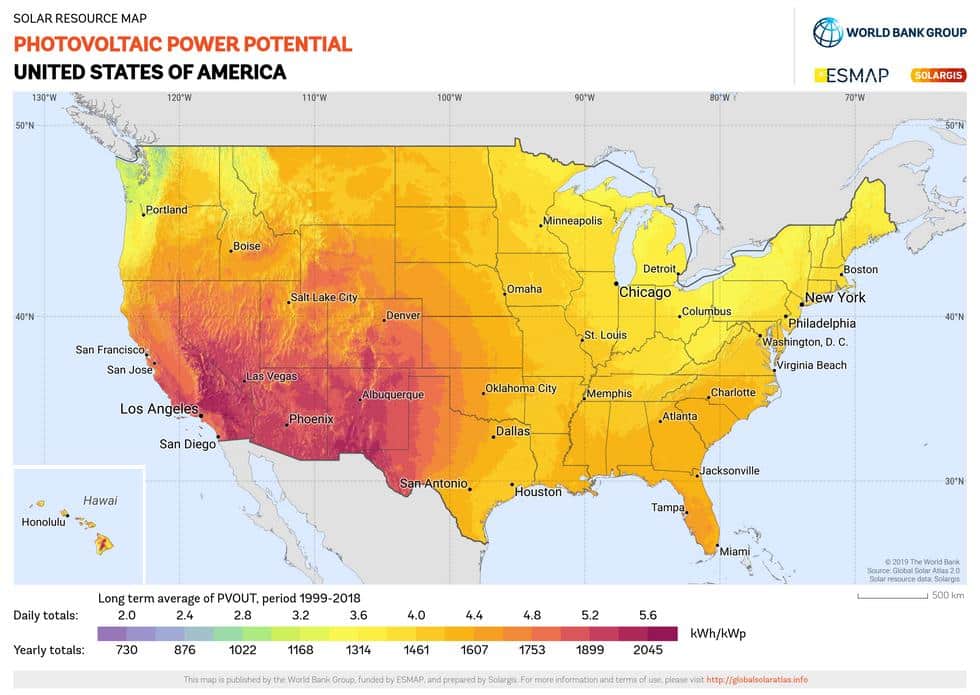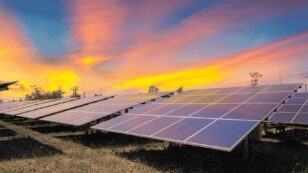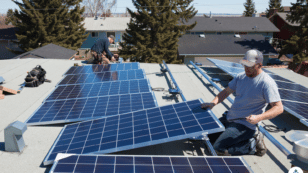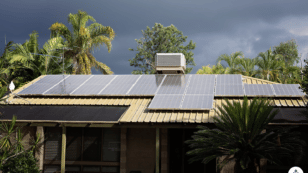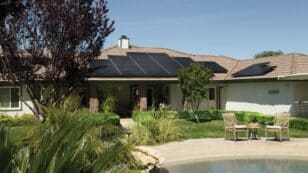
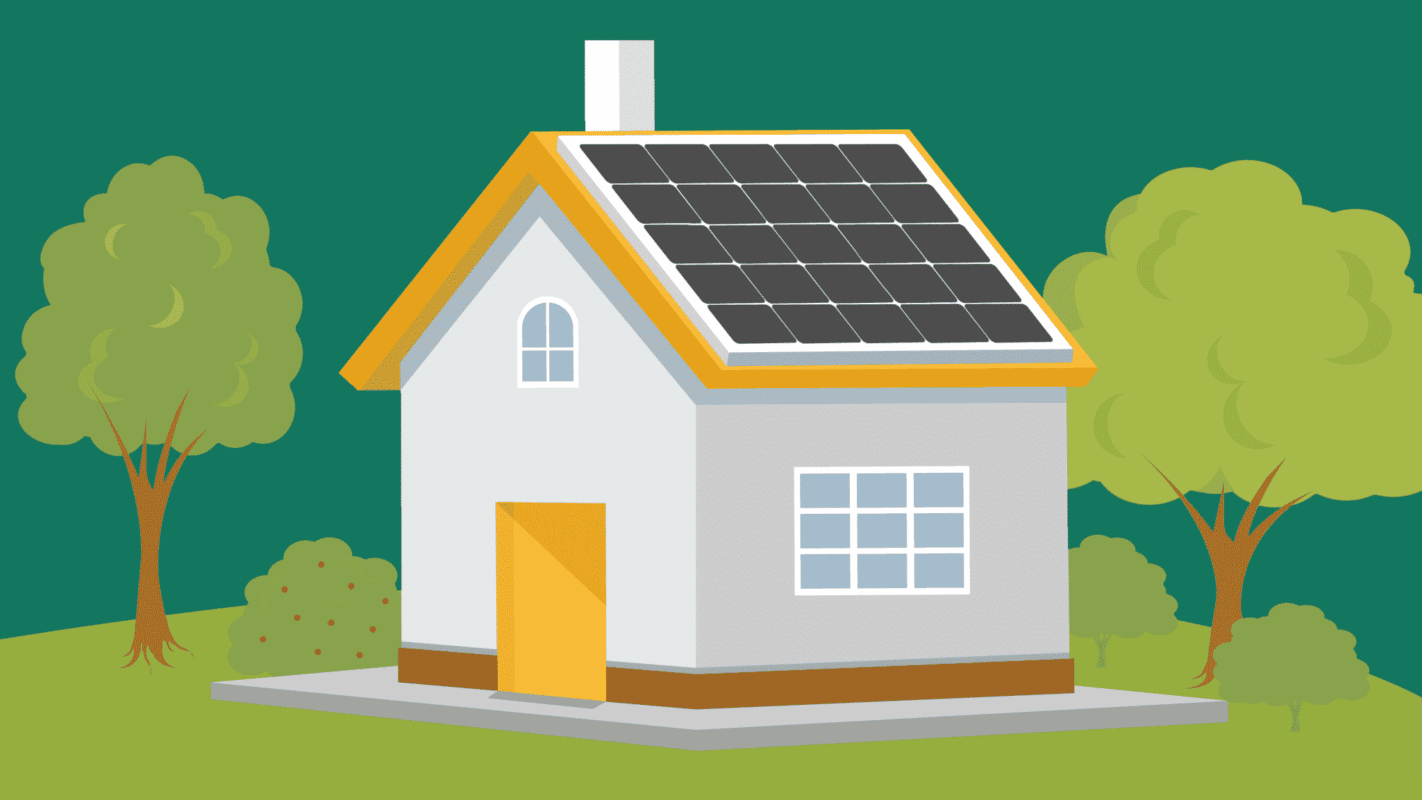
How Many Solar Panels Do I Need to Power My House? (2024 Solar Guide)
In this EcoWatch guide, you’ll learn:
- What factors influence how many solar panels your home needs
- How to calculate the number of solar panels needed to power your home
- How specific yield plays into system size of solar panels
This guide has helped many homeowners determine the optimal solar system size for their home. Let’s get started!
Each product and or company featured here has been independently selected by the writer. You can learn more about our review methodology here. If you make a purchase using the links included, we may earn commission.
Solar panel popularity has been on the rise but many still wonder if solar panels are affordable. Like many other products, with solar you do need to purchase a set amount of panels that will generate energy sufficient enough to cover the amount of electricity used in your home. The question at hand that we see the most from consumers to installers is how much will going solar cost and how many solar panels will we need.
The truth is that the exact amount will vary person by person and based on a variety of different factors. No one solar situation is the same and with the different customizable preferences that exist such as types of panels, using solar shingles vs solar panels, and what part of the country you live in can impact how effective your panels are and thus how many you need to cover your basic energy output.
With that said, the best way to discover how many panels your home will need is by speaking with a solar professional that will calculate solar panel outputs based on those factors and more. But for a rough estimate we’ve put together the same equation that professionals use to give you a better idea of what you might need.
- System size (kw) / production ratio / panel wattage (w) = the number of panels needed
Again, solar panel systems are highly individualized, so your solar provider will help you customize your solar panel system to meet your needs and preferences and advice on panel wattage and system size.
What Factors Affect How Many Solar Panels You Need?
The size of your home and available roof space, the amount of direct sunlight your home receives, the type and efficiency rating of your solar panels, and how much energy your household use are all factors that affect how many solar panels you need. For example, if there are two identical homes powered by solar energy in California and New York, with exactly the same energy usage, the California home will need fewer solar panels because the state gets more sunshine. But two homes in the same neighborhood might not even need the same number of solar panels. It all comes down to the individualized needs of each household.

Blue Raven Solar

Regional Service
Average cost
Pros
- Industry-leading in-house financing
- Competitive pricing
- Excellent reputation
Cons
- Doesn't offer solar batteries (coming 2022)
We like Blue Raven Solar because it understands that, for most homeowners, the cost of solar presents the biggest barrier to entry.
For that reason, Blue Raven Solar developed an innovative solar financing plan that offers in-house, flexible, zero-money-down options. The results speak for themselves, as Blue Raven Solar is now one of the fastest-growing solar companies in the nation and was recently acquired by SunPower. Its BluePower Plus+ plan (exclusive to Blue Raven) mimics the flexible structure of a lease while still providing the greatest benefits of owning your system.
Eligible homeowners enjoy 18 months of solar power before having to pay their first bill. When coupled with the federal solar investment tax credit (ITC), the initial energy savings can offset more than a third of the overall cost of a system before requiring a dollar down.
In contrast, other installers can only offer similar financing through solar leases, PPAs or third-party providers (such as Mosaic or Sunlight). Third-party loan providers can complicate the process, while opting for a loan or PPA will disqualify you from some of solar’s biggest benefits (additional property value, federal solar tax credit and local solar incentives).
Facts and Figures: Blue Raven Solar
| EcoWatch Rating |
|---|
| Better Business Bureau (BBB) Rating |
| Year Founded |
| Average Cost ($-$$$$$) |
| Solar Services |
| Brands of Solar Equipment Offered |
| Warranty Coverage |
| 4.5 |
| A+ |
| 2014 |
| $$ |
| Solar Panels, System Monitoring |
| Trina Solar, Canadian Solar, SolarEdge, Silfab, SunPower |
| 25-year manufacturer warranty; 10-year workmanship warranty, 2-year production guarantee |
The following are some of the most important factors to consider when figuring out many solar panels your house needs:
The Size of Your Home and Available Roof Space
Larger homes tend to consume more electricity, and they generally need more solar panels. However, they also have the extra roof space necessary for larger solar panel installations.
There may be exceptions to this rule — for example, a 2,000-square-foot home with new Energy Star appliances may consume less power than a 1,200-square-foot home with older, less-efficient devices. When it comes to installation, solar panels can be placed on many types of surfaces.
However, your roof conditions may limit the number of solar panels your home can handle. For example, if you have a chimney, rooftop air conditioning unit or skylight, you’ll have to place panels around these fixtures. Similarly, roof areas that are covered by shadows are not suitable for panels.
Also, most top solar companies will not work on asbestos roofs due to the potential health risks for installers.
The Amount of Direct Sunlight in Your Area
Where there is more sunlight available, there is more energy that can be converted into electricity. The yearly output of each solar panel is higher in states like Arizona or New Mexico, which get a larger amount of sunlight than less sunny regions like New England.
The World Bank has created solar radiation maps for over 200 countries and regions, including the U.S. The map below can give you an idea of the sunshine available in your geographic location. Keep in mind that homes in sunnier regions will generally need fewer solar panels.
© 2020 The World Bank, Source: Global Solar Atlas 2.0, Solar resource data: Solargis.
Number of Residents and Amount of Energy You Use
Households with more members normally use a higher amount of electricity, and this also means they need more solar panels to increase energy production.
Electricity usage is a very important factor, as it determines how much power must be generated by your solar panel system. If your home uses 12,000 kilowatt-hours (kWh) per year and you want to go 100% solar, your system must be capable of generating that amount of power.
Types of Solar Panels and Efficiency Rating Used
High-efficiency panels can deliver more watts per square foot, which means you need to purchase fewer of them to reach your electricity generation target. There are three main types of solar panels: monocrystalline, polycrystalline and thin-film.
In general, monocrystalline panels are the most efficient residential solar panels, followed closely by polycrystalline panels. Thin-film panels are the least efficient.
If you want to know for sure how many panels you need, you can click below to connect with an EcoWatch-vetted installer and get a free estimate.
How Can You Estimate the Number of Solar Panels You Need to Power Your Home?
So, based on these factors, how many solar panels power a home?
To roughly determine how many solar panels you need without a professional assessment, you’ll need to figure out two basic things: what is your energy use and how much energy your panels will produce. We dive into these in more detail below, but here are the general steps:
- Calculate how much energy your home uses
- Assess your roof space and the amount of sunlight your home receives
- Figure out the specific yield of solar panels in your area to estimate system size
- Check the wattage of the specific panels you intend to purchase
- Divide the wattage of your system by the solar panel wattage
Determine Your Home’s Electricity Needs
According to the latest data from the U.S. Energy Information Administration (EIA), the average American home uses 10,572 kWh of energy per year. However, this varies depending on the state. For example:
- Louisiana homes have the highest average consumption, at 14,412 kWh per year.
- Hawaii homes have the lowest average consumption, at 6,444 kWh per year.
To more closely estimate how much energy you use annually, add up the kWh reported on your last 12 monthly electric bills. These numbers will fluctuate based on factors like the size of your home, the number of residents, your electricity consumption habits and the energy efficiency rating of your home devices.
Electricity Needs for Common Household Appliances
The size of your home is a major indicator of how many solar panels you need, but you also have to take into account your daily energy use. For instance, a household with common appliances — such as a refrigerator, dishwasher, stove, etc — will consume less electricity than a home that has an added heated pool, central air conditioner, hot tub and electric vehicle.
These additional appliances and systems will dramatically increase your daily energy use, which means you will need more solar panels to offset your total energy consumption. As you plan your home solar system, make a list of all your appliances and systems so that all are accounted for in your final design.
| Product | Average Annual Energy Use | Number of Solar Panels Needed |
| Television | 100 kW/year | 1 |
| Dishwasher | 360 kW/year | 2 |
| Oven | 410 kW/year | 2 |
| Dryer | 470 kW/year | 2 |
| Energy Star Refrigerator | 615 kW/year | 2 |
| Electric Vehicle | 4,000 kW/year | 12 |
| Electric Water Heater | 4,500 kW/year | 16 |
*assuming 350-watt solar panels are installed and average sun hours
Solar Panel Specific Yield
After you determine how many kWh of electricity your home uses annually, you’ll want to figure out how many kWh are produced by each of your solar panels during a year. This will depend on the specific type of solar panel, roof conditions and local peak hours of sunlight.
In the solar power industry, a common metric used to estimate system capacity is “specific yield” or “specific production.” This can be defined as the annual kWh of energy produced for each kilowatt of solar capacity installed. Specific yield has much to do with the amount of sunlight available in your location.
You can get a better idea of the specific yield that can be achieved in your location by checking reliable sources like the World Bank solar maps or the solar radiation database from the National Renewable Energy Laboratory. To estimate how many kW are needed to run a house, you can divide your annual kWh consumption by the specific yield per kilowatt of solar capacity.
For example, if your home’s energy needs are 15,000 kWh per year, and solar panels have a specific yield of 1,500 kWh/kWp in your location, you will need a system size of around 10 kilowatts. Paradise Energy Solutions has also come up with a general formula to roughly ballpark the solar power system size you need.
You can simply divide your annual kWh by 1,200 and you will get the kilowatts of solar capacity needed. So, if the energy consumption reported on your last 12 utility bills adds up to 24,000 kWh, you’ll need a 20 kW system (24,000 / 1,200 = 20).
You can also visit this resource to get an idea of how solar panels may perform at your house.
Watch below for more info on how your solar panels may be producing less electricity (watts) than what their power rating claims.
How Much Roof Space Does Your Solar Panel System Need?
On average, a solar system requires between 280 square feet and 350 square feet of roof space. Considering the average square footage of residential home roofs in the United States is 1,700 square feet, most people will not have any issues with solar panel installation.
But if you have a smaller roof, it’s best to invest in higher efficiency panels because you will need fewer panels to cover your energy costs. To help estimate the required square footage for your home solar, we’ve created a table that estimates how much space you’ll need for the most common solar system sizes:
| System Size | Estimated Monthly Energy Production | Number of 350-Watt Solar Panels | Minimum Required Roof Square Footage |
| 3 kW | 200 – 520 kWh | 9 | 160 sq. ft. |
| 5 kW | 300 – 860 kWh | 15 | 265 sq. ft. |
| 7 kW | 430 – 1,210 kWh | 20 | 355 sq. ft. |
| 9 kW | 555 – 1,550 kWh | 26 | 460 sq. ft. |
| 11 kW | 678 – 1900 kWh | 32 | 565 sq. ft. |
| 15 kW | 924 – 2500 kWh | 43 | 760 sq. ft. |
*based on the installation of 350-watt panels and average sun hours
The above estimates are based on the installation of 350-watt solar panels. If you decide to go with panels rated for more or less wattage, the required roof space will differ. For instance, you will need more roof space for panels with less wattage and less roof space for panels rated for a higher wattage.
It’s fairly simple to determine how much roof space you need, just multiply the number of solar panels you need by their size. The industry average square footage of a solar panel is 17.55 square feet, but this number will vary depending on your panels.
Below we’ve provided estimates for the amount of roof space you’ll need if you install a 9 kW solar system but choose panels with a wattage other than 350-watts:
- 300-watt panels: 30 solar panels = 530 square feet
- 325-watt panels: 28 solar panels = 500 square feet
- 375-watt panels: 24 solar panels = 425 square feet
- 400-watt panels: 23 solar panels = 400 square feet
Conclusion: How Many Solar Panels Do You Need?
Once you know how much electricity you use and the system size you need, you can check your panel wattage to figure how many panels to purchase for your solar array. Multiply your system size by 1,000 to obtain watts, then divide this by the individual wattage of each solar panel.
Most of the best solar panels on the market have an energy output of around 330W to 360W each. The output of less efficient panels can be as low as 250W. So, if you need a 10-kW solar installation and you’re buying solar panels that have an output of 340W, you’ll need 30 panels. Your formula will look like this: 10,000W / 340W = 29.4 panels.
If you use lower-efficiency 250-watt solar panels, you’ll need 40 of them (10,000W / 250W = 40) panels. Keep in mind that, although the cost of solar panels is lower if you choose a lower-efficiency model over a pricier high-efficiency one, the total amount you pay for your solar energy system may come out to be the same or higher because you’ll have to buy more panels.
If you want to know for sure how many panels you need, you can click below to connect with an EcoWatch-vetted installer and get a free estimate.
The cost information presented in this article is derived from a comprehensive analysis, incorporating data from multiple industry sources. The average cost per watt per state was calculated based on figures from Consumer Affairs, Energy Sage, and Berkeley Lab’s Electricity Markets & Policy Department. Additionally, monthly energy consumption and the average monthly cost of electricity were sourced from the U.S. Energy Information Administration, ensuring a well-rounded and accurate representation of the information presented.
FAQ: Solar Panels Needed to Power a House
At EcoWatch, we often have readers asking us how many solar panels they need to install on their homes. Below are some of the most common questions that we receive about this. If you have specific questions that aren’t answered here, reach out to our team of solar experts at solar@ecowatch.com.
You can ballpark how many solar panels you need to power your home by first dividing your annual kWh of energy usage by 1,200 to see what size system you need to offset 100% of your energy use.
For example, if the energy consumption reported on your last 12 power bills adds up to 12,000 kWh, you’ll need a 10 kW system (12,000 / 1,200 = 10). Then, divide the size of the system by the wattage output of the solar panel you choose to figure out how many solar panels you’ll need. For example, if your solar panel produces 200 W, you’ll need 25 of them for a 10 kW system (10,000 W / 400 W = 25 panels).
The amount of solar panels needed to power a home is based less on the square footage and more on the household energy use.
According to the Energy Industries Association, the average U.S. home consumes 10,572 kWh of electricity per year, which would require a 9 kW system to fully power it. To figure out how many panels you need, divide the wattage of your system (9 kW is 9,000 W) by the wattage output of your solar panels. If you buy solar panels with an output of 350 W, you’ll need about 26 panels (9,000 W / 350 W = 25.7 panels)
Yes, you can run an entire home on solar power. However, your home must have good solar conditions (a roof that gets direct sunlight, plenty of sunny days, minimal shade, etc.) and may need a solar battery to power your lights and appliances when your panels are not producing energy, like at night.
It depends on how much energy the household uses. For the average U.S. home that consumes 10,572 kWh and requires a 9 kW system to power, it would take 90 100 watt solar panels to power (9,000 W / 100 W = 90 panels). However, 100 watt solar panels are pretty low efficiency. The best solar panels have an output of around 350 W to 400 W each, while less efficient panels still produce around 250 W.
Related Solar Energy Guides
Comparing authorized solar partners
-
- Industry-leading in-house financing
- Competitive pricing
- Excellent reputation
- Doesn't offer solar batteries (coming 2022)
A+Best Solar Financing2014Trina Solar, Canadian Solar, SolarEdge, Silfab, SunPower25-year manufacturer warranty; 10-year workmanship warranty, 2-year production guarantee
Having trouble deciding? Click below and use our process to receive multiple quotes instead:

 233k
233k  41k
41k  Subscribe
Subscribe 
